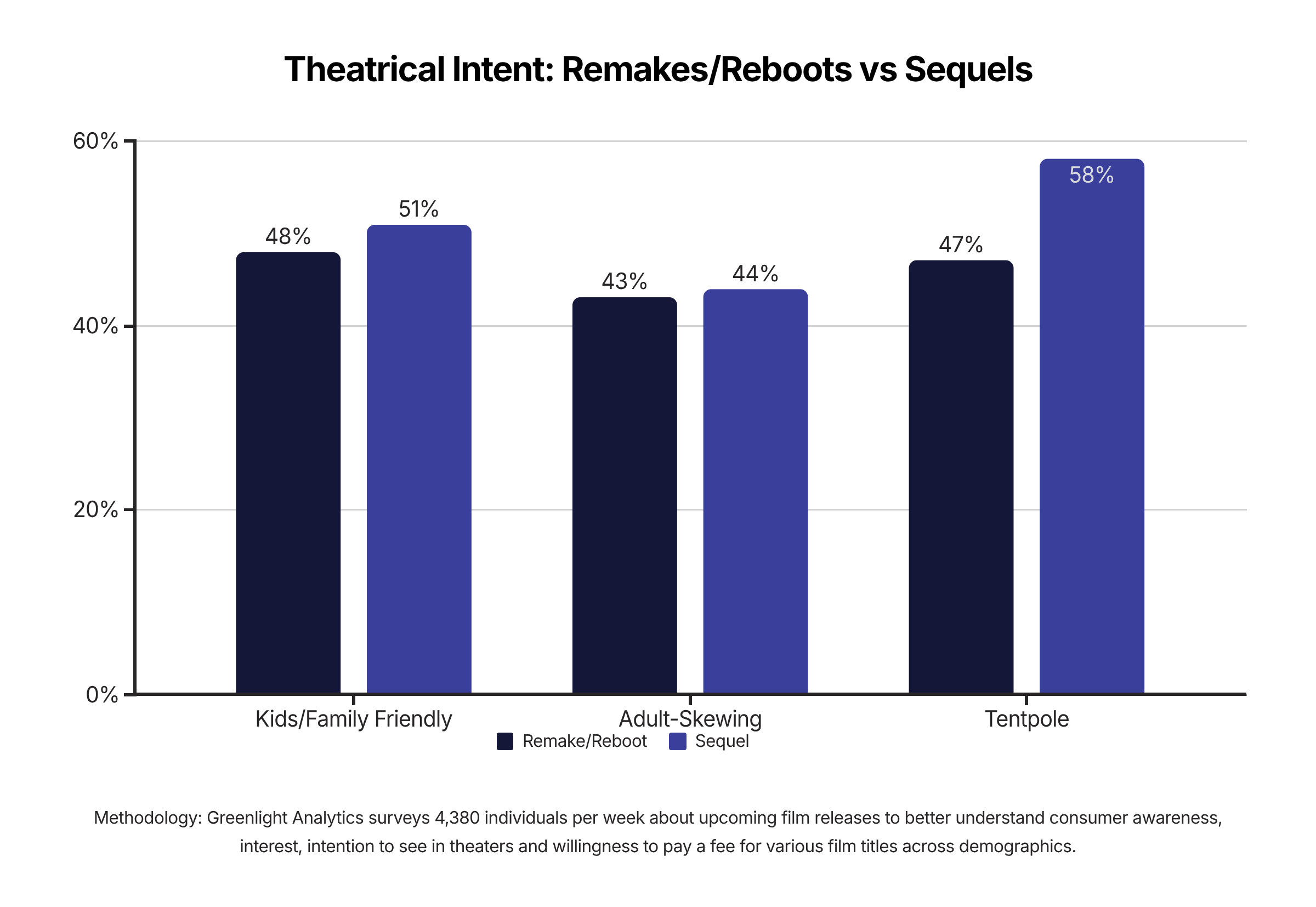Hollywood's 'Fresh Start' Problem: Why Sequels Beat Reboots Every Time
Everyone knows that in the 21st century, Hollywood business now revolves around selling audiences on characters and concepts they're already familiar with. Here's your third big-screen version of Superman in the last 20 years, the 11th Fast & Furious film, and the 37th entry in the Marvel Cinematic Universe. Who has the time, energy, and—most importantly—marketing budget to properly promote a wholly original or new-to-screen idea to the masses today? Yet merely recycling intellectual property does not solve all of Hollywood's problems. Generating consistent audience buy-in from these efforts requires a careful understanding of audience behavior, especially when it comes to remakes/reboots versus sequels.
In an analysis of 65 films across the kids/family-friendly, adult-skewing, and franchise tentpole genres released between 2021 and today, Greenlight Analytics found that sequels consistently outperformed remakes/reboots in terms of theatrical intent—those planning to see a title in theaters—in the week of release. Naturally, this has a trickle down effect to at-home viewership.
Sequels (John Wick: Chapter 4, Doctor Strange in the Multiverse of Madness, etc.) in the franchise tentpole space enjoyed the largest average lead in theatrical intent over reboots/remakes (The Batman, Superman, etc.) with an 11-point differential. This was followed by kids/family-friendly movies (3 points), which included animated sequels, live-action remakes, etc., and adult-skewing titles (1 point) such as horror and action.
Put plainly, audiences had more pre-release theatrical ambitions for sequels to Inside Out and Moana, while other factors, such as positive word of mouth and scheduling, mattered more for reboots/remakes such as How to Train Your Dragon and Teenage Mutant Ninja Turtles: Mutant Mayhem. This split was not quite as pronounced in the adult-skewing lane, with reimaginings such as Nosferatu faring similarly to legacy sequel 28 Years Later pre-release.
Median theatrical intent across all three film types is even wider—55% for sequels vs. 47% for reboots/remakes. (One caveat: the tentpole reboot/remake category doesn't have as many examples as sequels.) The big takeaway? Audiences are more willing to return to a familiar continuation of a story they enjoy than they are to show up for a reinvention. If healthy theatrical intent is absent, it suggests consumers are far more likely to wait for a movie to become available at home. One recent example is the John Wick spinoff Ballerina (a movie I personally enjoyed. Flamethrowers rule!). The film only posted a 39% theatrical intent score in the week of release, but ranked top three in VOD charts across Prime Video, Apple TV and Fandango in its first few weeks of availability.
IP recognition helps, but it's not a magic wand. Reboots/remakes can struggle if they aren't paired with strong creative hooks, massive brand equity, or smart marketing. As Puck News' box office expert Scott Mendelson pointed out, Superman was sold to audiences as a hopeful contrast to the darker DCEU version of the character and a modernized take compared to the classic Christopher Reeve films. This helped it stand out despite the character's frequent on-screen presence.
More generally, there's also a sense that trust and continuity matter more than nostalgia alone. Sequels benefit from built-in narrative momentum and audience goodwill, which remakes often lack. Understanding these differences can help studios better cultivate and maintain their franchises as well as deploy key IP.


